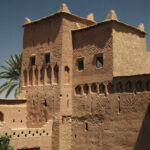Hot bath or Hammam as Moroccan call it, is a public bath. Where people sit half-naked (wearing shorts for men for example) in hot rooms and scrub the dead skin. Moroccans went to Hammam at least once a week. And they enjoy the process of cleaning oneself in a hot room. That makes the dead skin easy to remove. In hamam, you can scrub yourself. Or if you want there is a person who is responsible for scrubbing the clients. The hot rooms are so relaxing and effectively do release the tiredness. The experience of the Moroccan Hammam will not be completed without a refreshing cup of mint tea.
Agency Location
- DR, 590 Bd Bouakkaz, Marrakech 40000
Phone Number
Email us
- © 2022 deserttourinmorocco.com All Rights Reserved.


